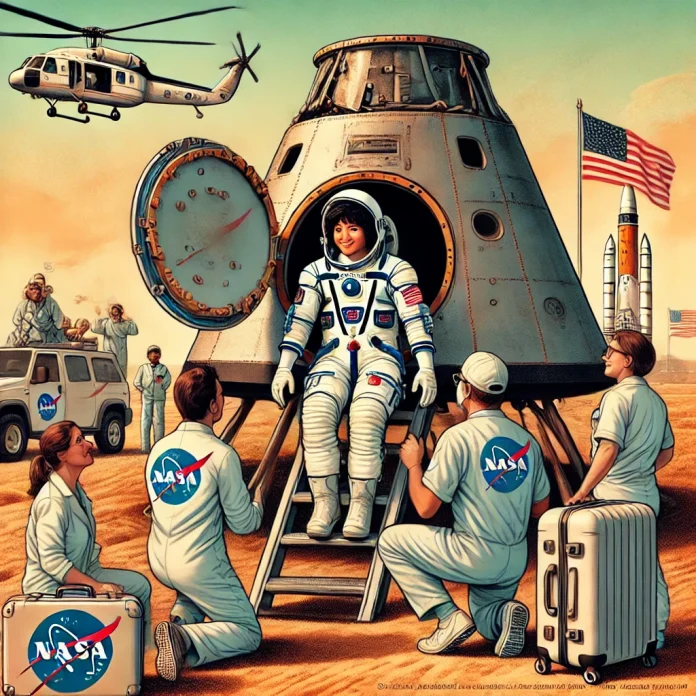NASA astronaut Sunita Williams, along with her three crewmates, including Butch Wilmore, has successfully returned to Earth after spending nine months in space aboard the International Space Station (ISS). Their journey was marked by scientific experiments, spacewalks, and critical maintenance tasks that contributed to ongoing space research. However, now that the mission is over, the real challenge begins—readjusting to life on Earth.
The Challenges of Returning to Earth
Spending an extended period in microgravity has profound effects on the human body. Astronauts experience:
- Muscle Atrophy – The lack of gravity weakens muscles, requiring intensive rehabilitation.
- Bone Density Loss – A major concern for long-duration space missions, as bones weaken in the absence of weight-bearing activity.
- Fluid Redistribution – Astronauts often experience dizziness and difficulty balancing as bodily fluids shift back to their normal distribution on Earth.
To combat these challenges, Sunita Williams and her fellow astronauts will undergo a carefully structured rehabilitation program designed to help them regain strength and adapt to Earth’s gravity.
Post-Mission Rehabilitation and Medical Evaluations
NASA’s medical team will closely monitor the astronauts’ health over the next few months. Their rehabilitation plan includes:
- Physical Therapy – To rebuild muscle strength and improve coordination.
- Bone Density Scans – To assess any loss and determine necessary recovery measures.
- Cardiovascular Assessments – As space travel can impact heart function.
- Neurological Testing – To ensure cognitive function remains sharp after prolonged exposure to microgravity.
Williams and her crewmates will also participate in debriefing sessions with NASA scientists, sharing their experiences and insights from the mission. These discussions help improve future space missions and develop strategies for upcoming long-duration flights, including missions to the Moon and Mars.
What’s Next for Sunita Williams?
As one of NASA’s most experienced astronauts, Sunita Williams is likely to take on a crucial role in upcoming space exploration missions. Possible next steps include:
- Training for Future Missions – With NASA and international space agencies focusing on deep-space exploration, Williams could be involved in future Artemis missions to the Moon.
- Mentoring and Research – As a veteran astronaut, she will likely contribute to astronaut training programs, helping prepare the next generation for space travel.
- Public Outreach and Advocacy – Williams is known for inspiring young minds. Expect her to be involved in education and outreach programs to promote STEM education and encourage aspiring astronauts.
The Bigger Picture: Preparing for Mars
Williams’ experience is invaluable as space agencies plan for long-duration missions to Mars. Insights from her return to Earth will help scientists develop better countermeasures to ensure astronaut health and safety on future deep-space expeditions.
For now, Sunita Williams and her crewmates will focus on readjusting to life on Earth, celebrating their achievements, and preparing for what comes next in their spacefaring careers.









